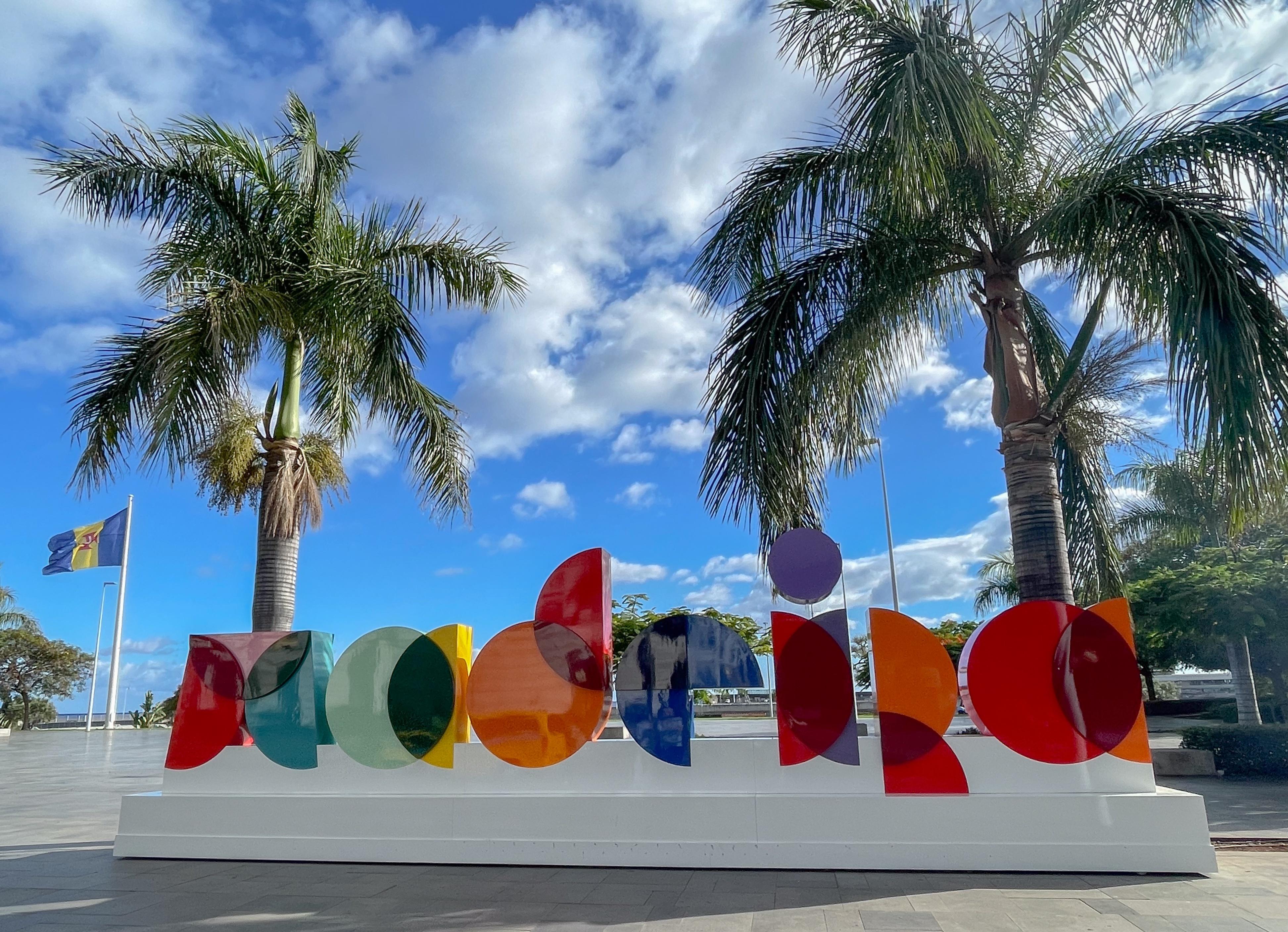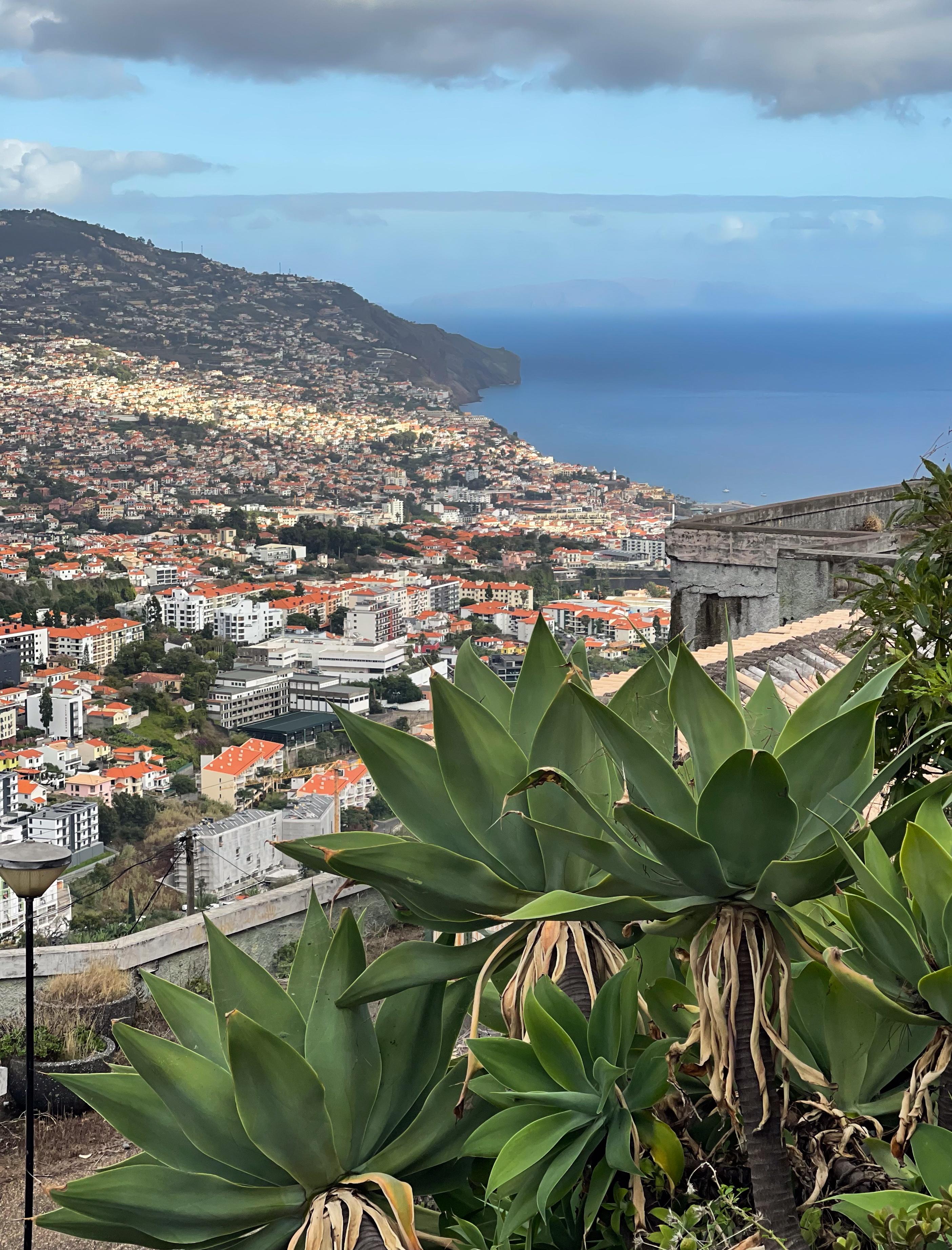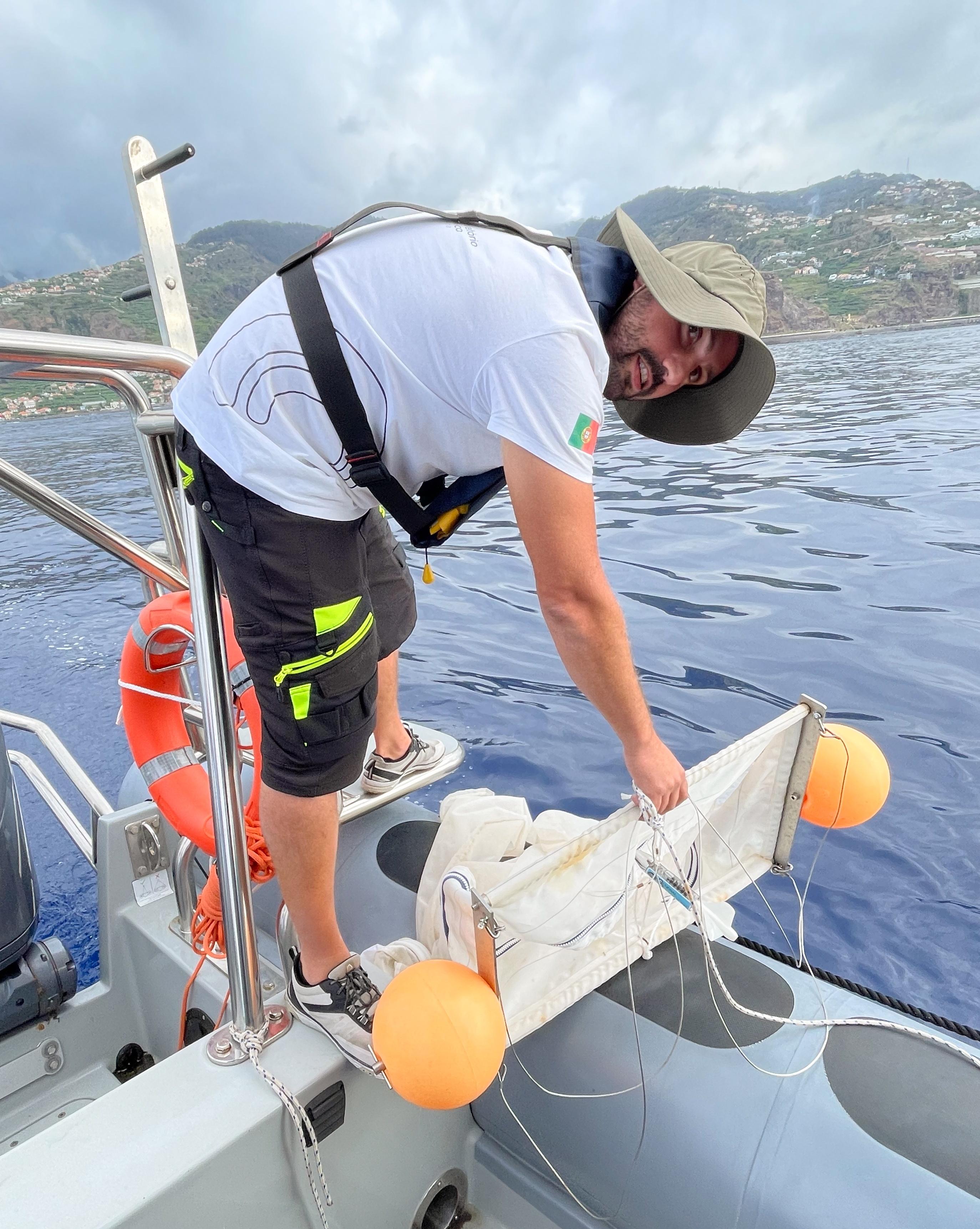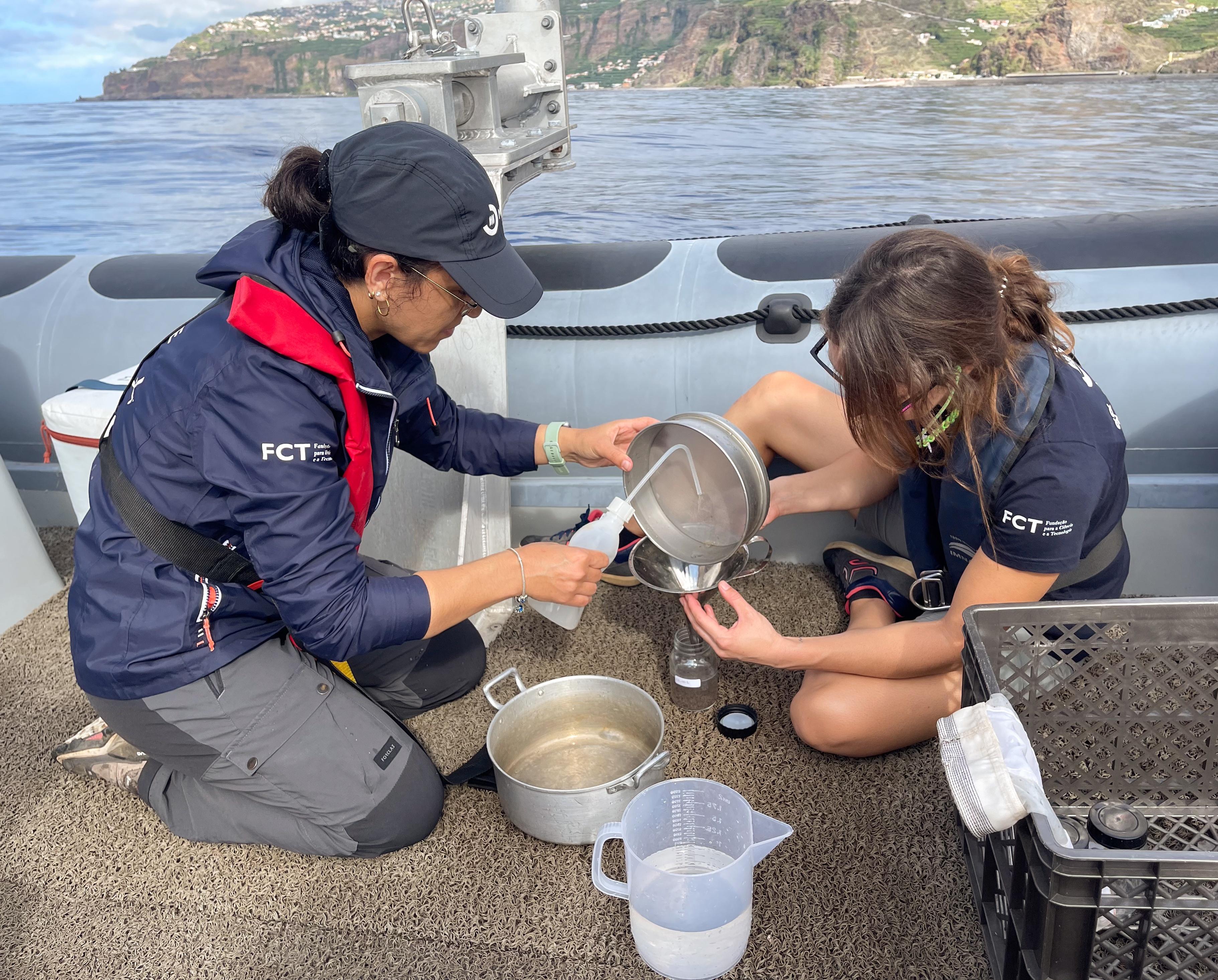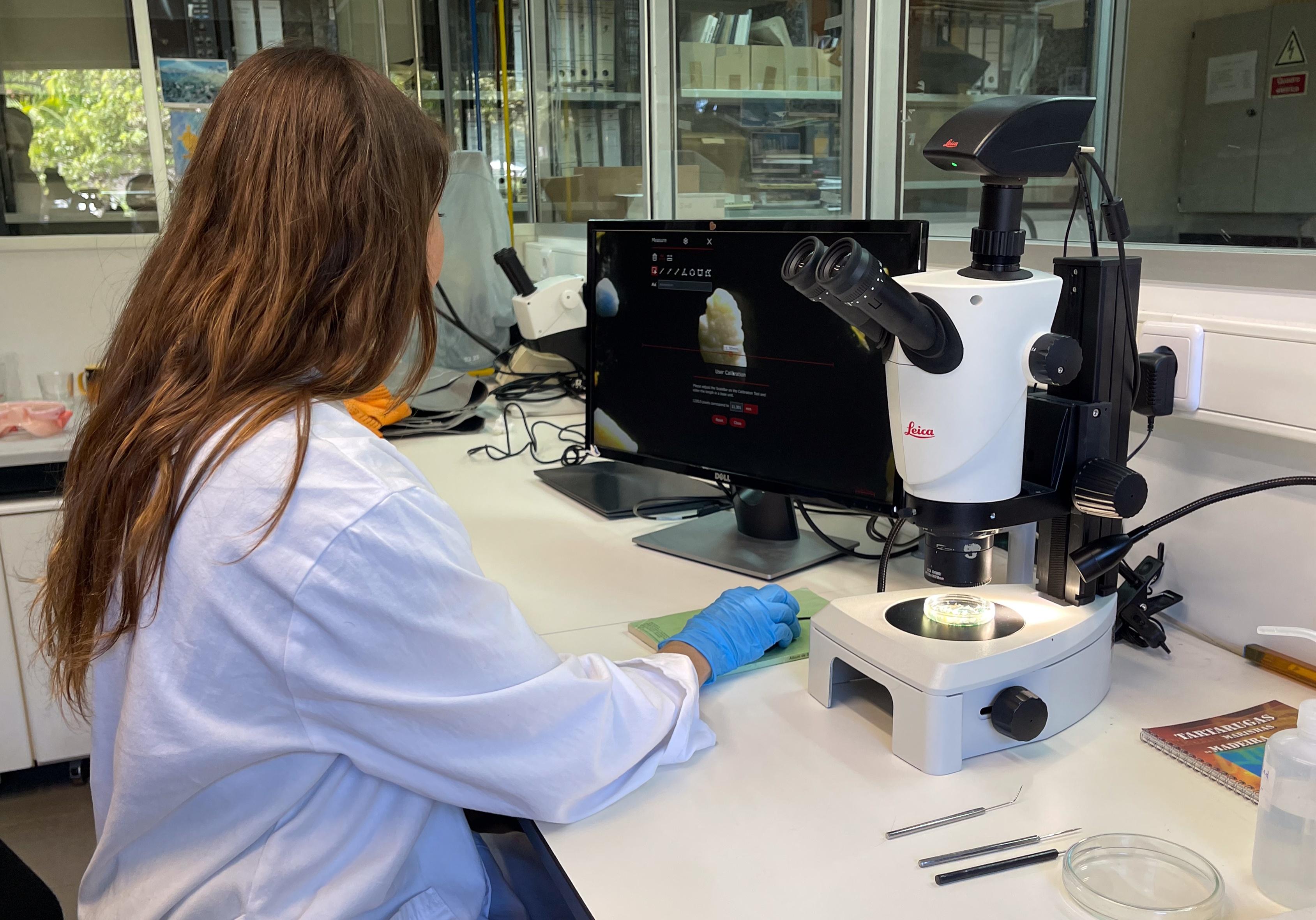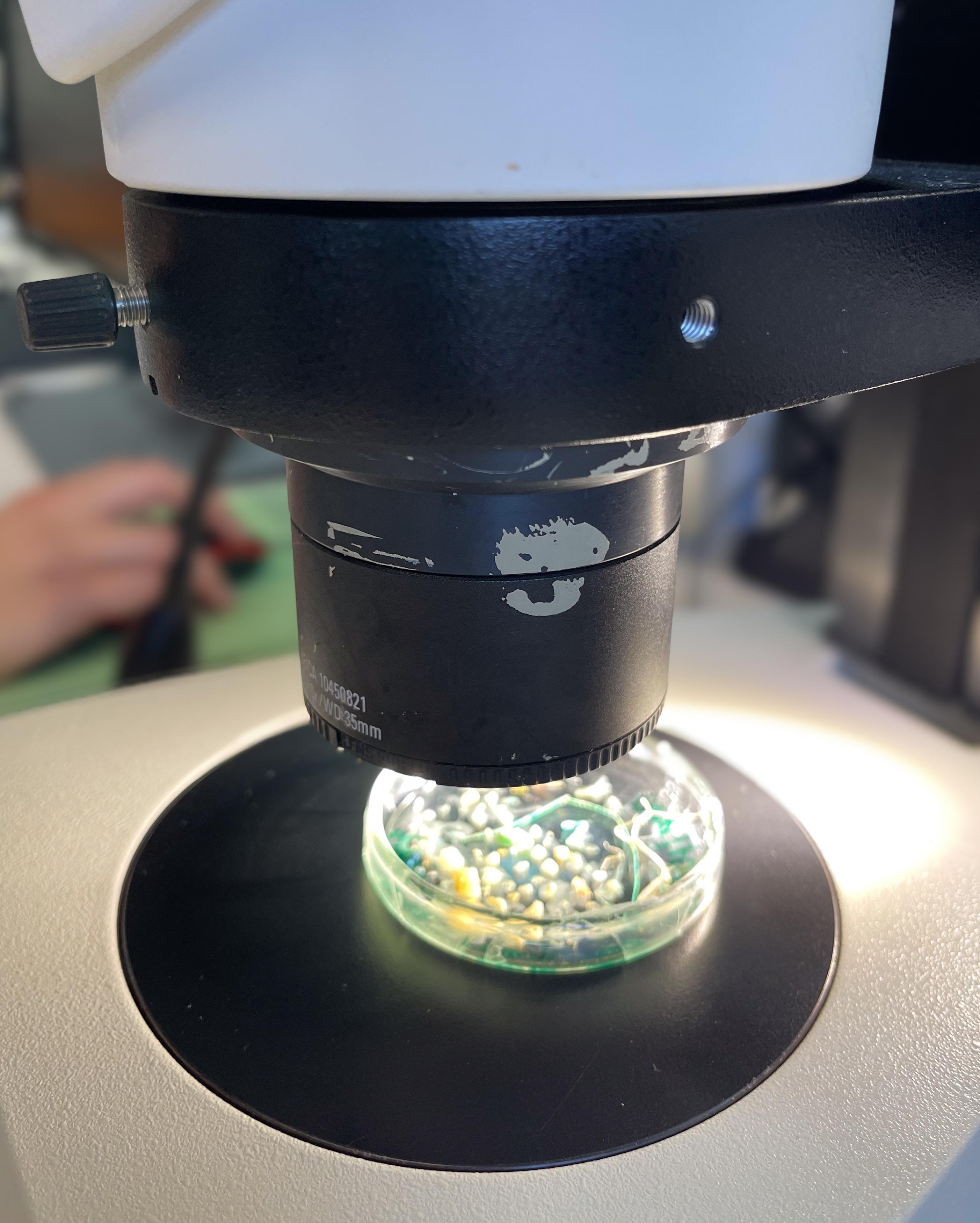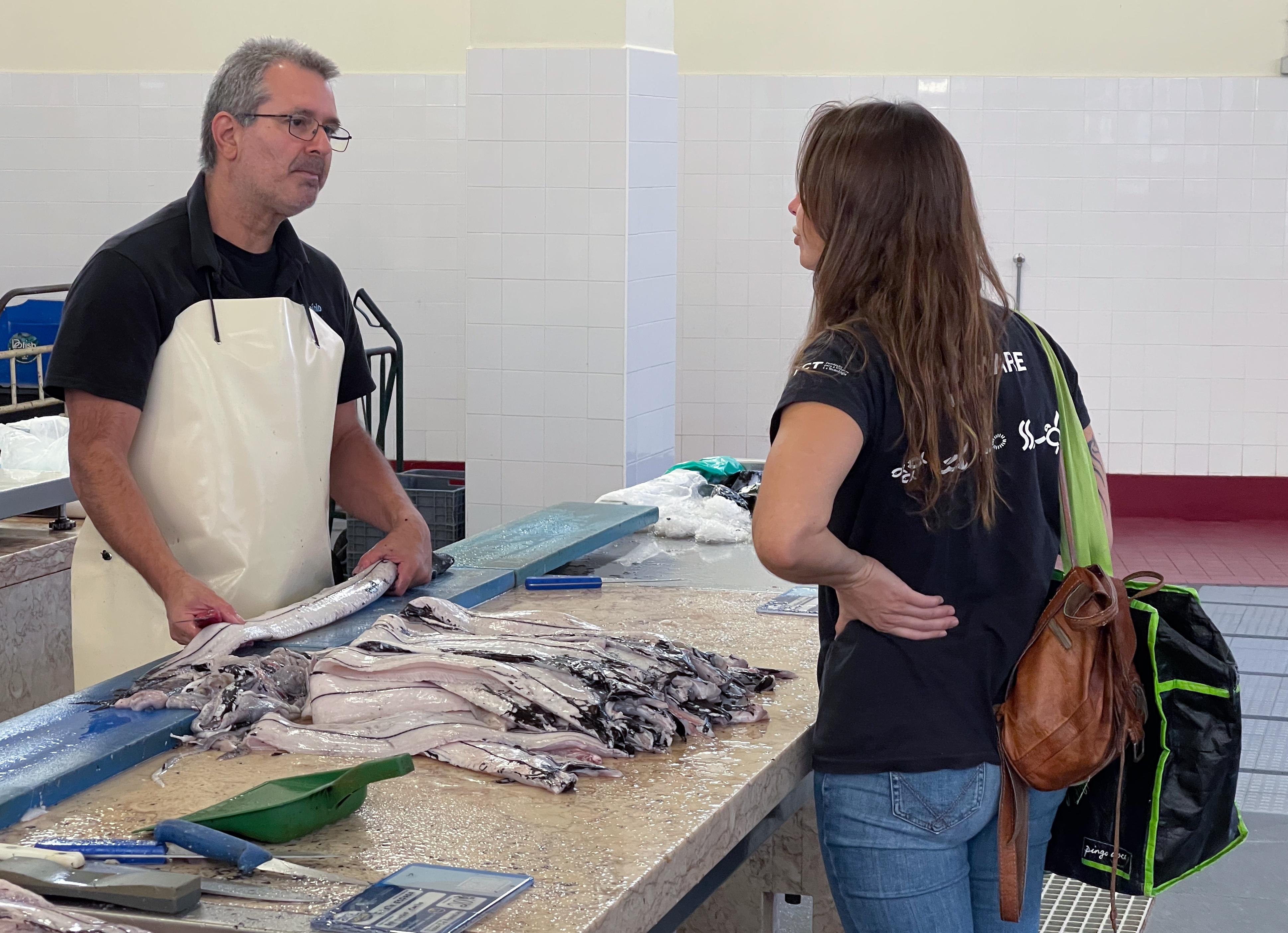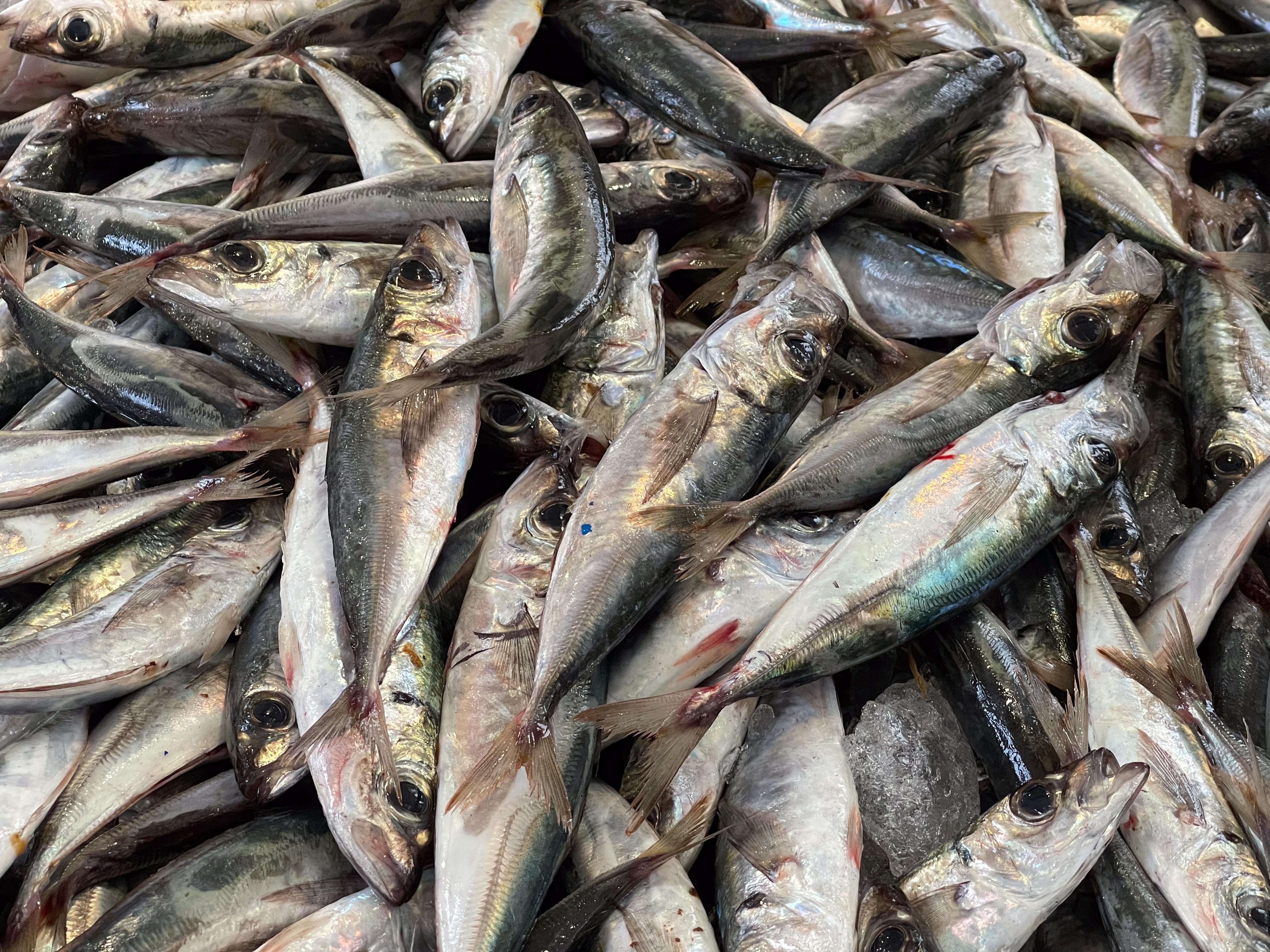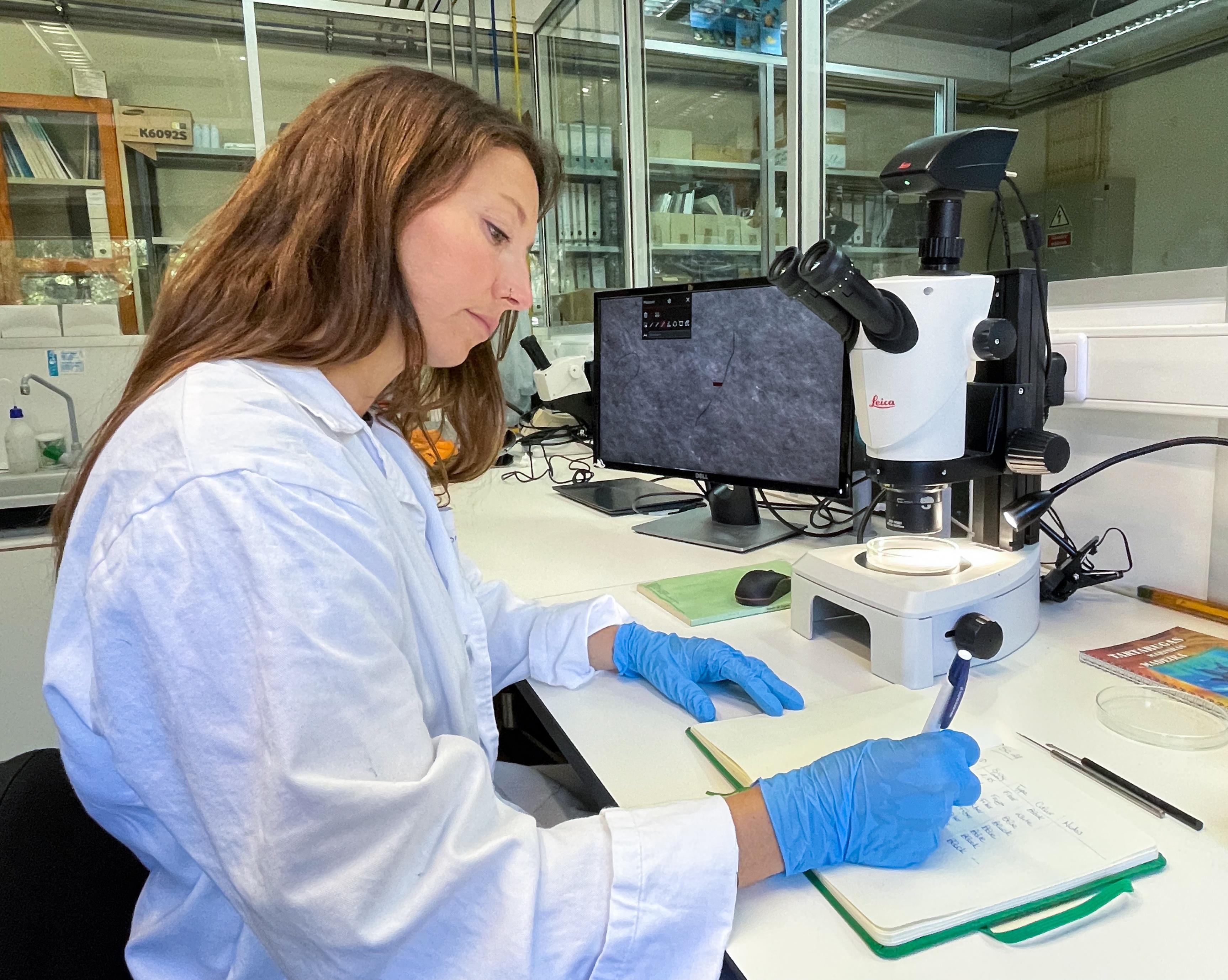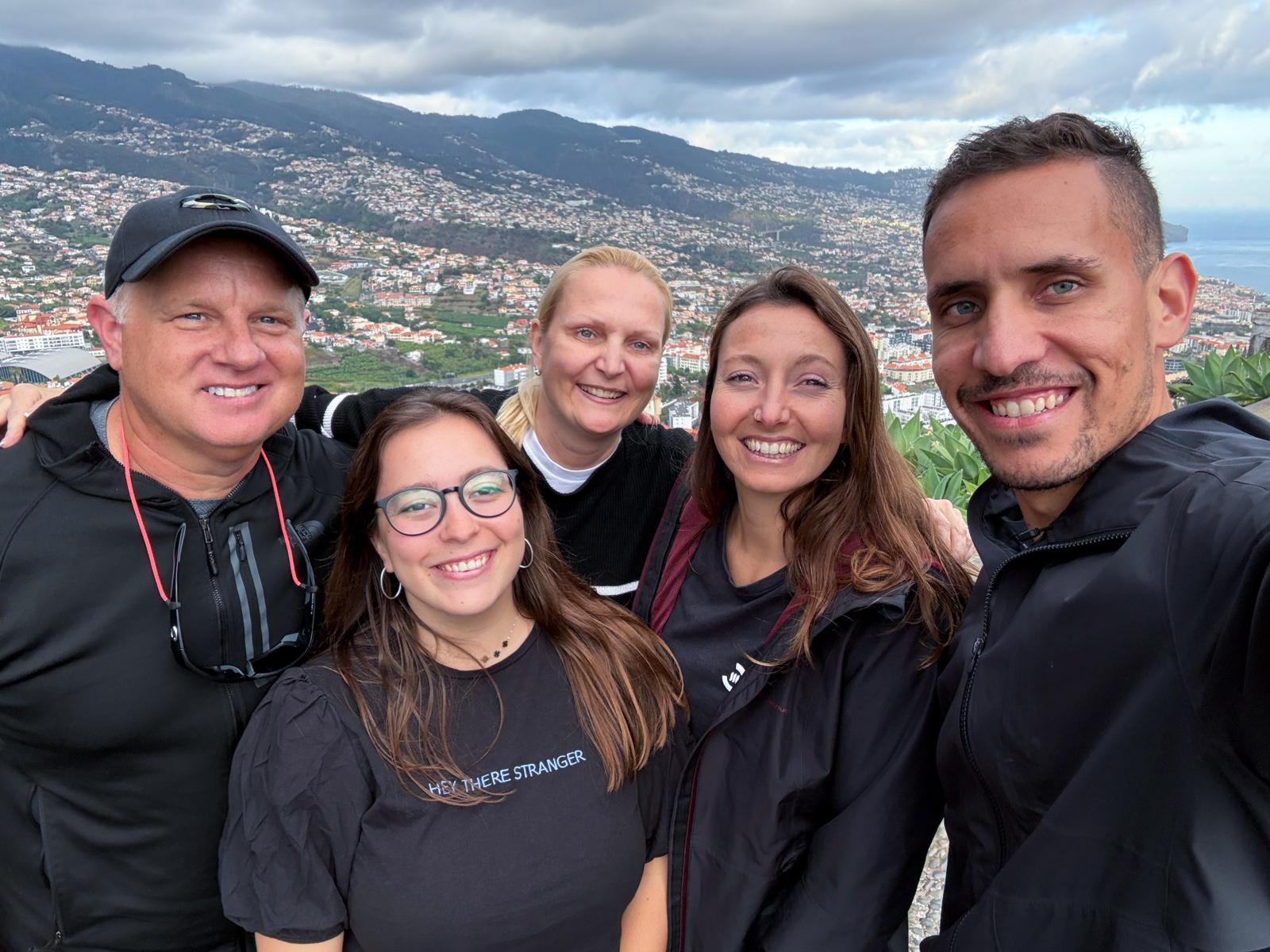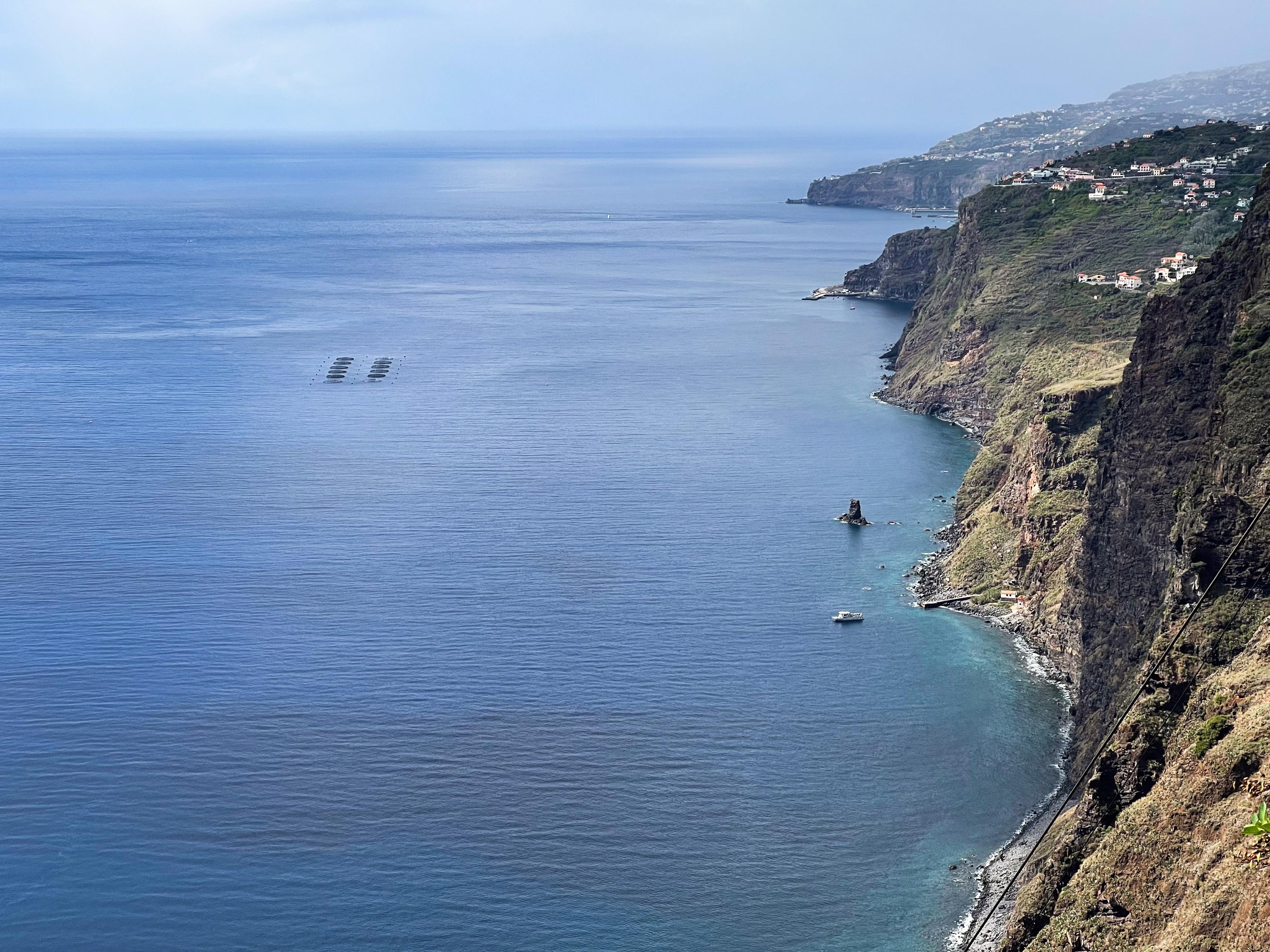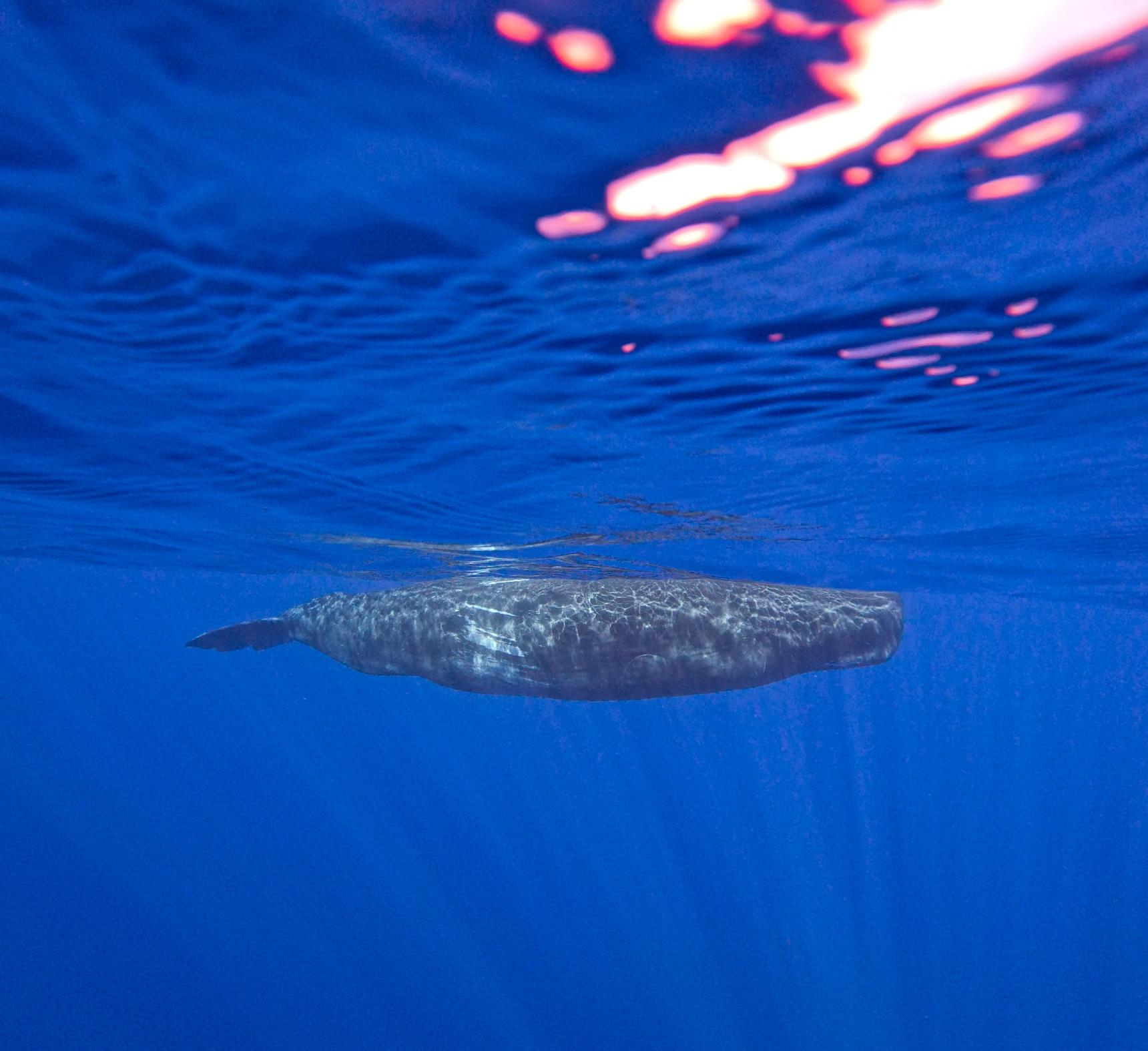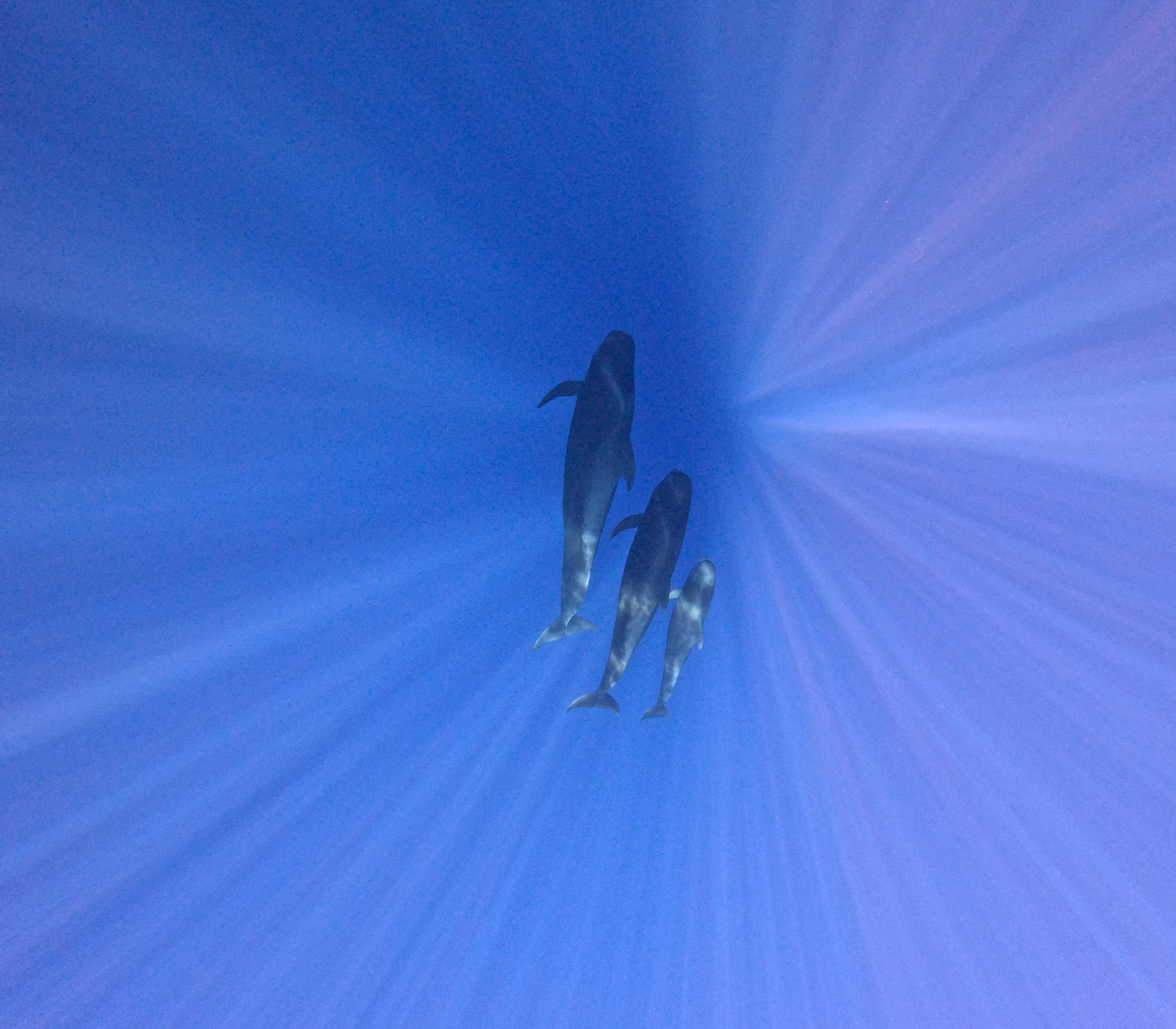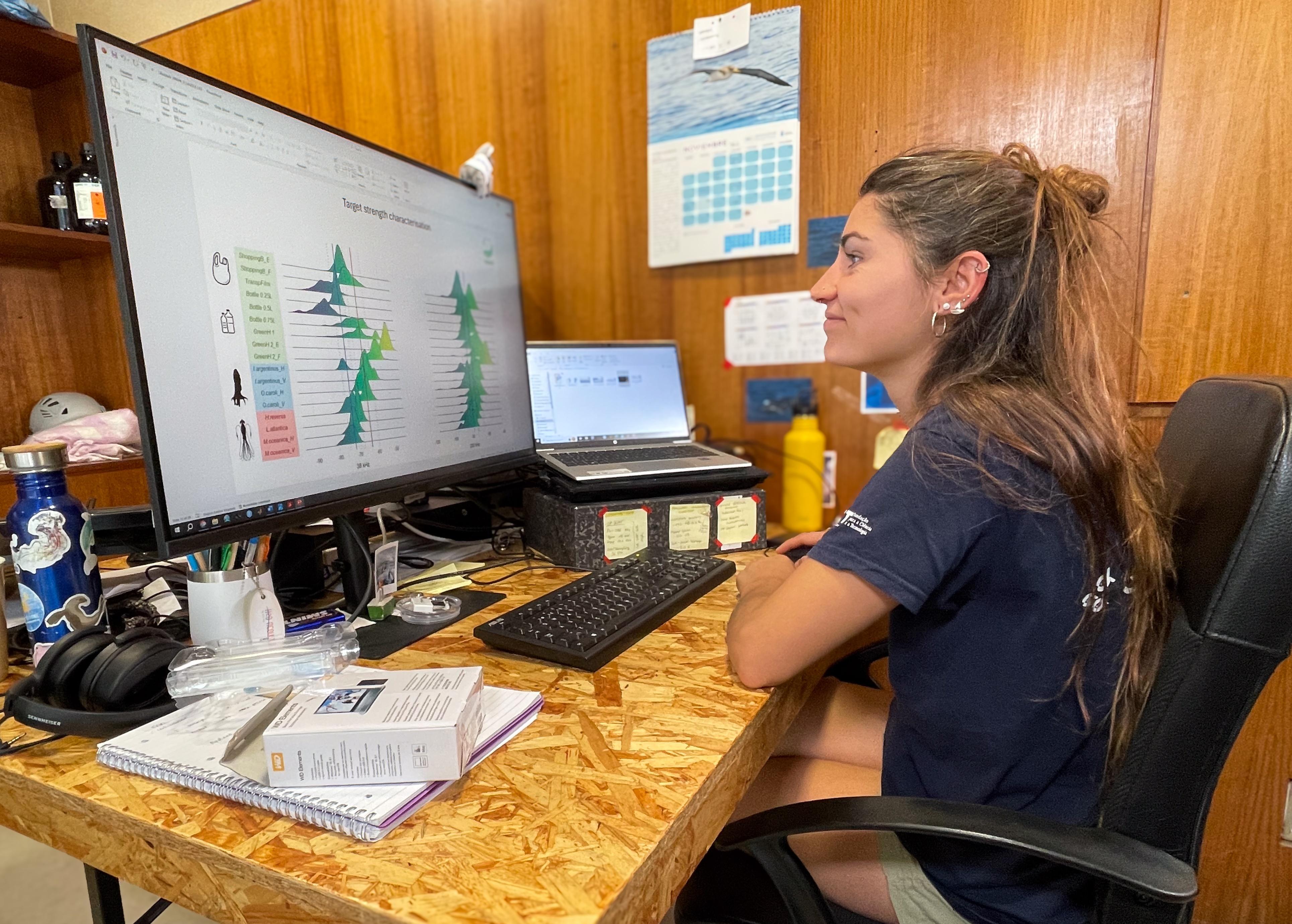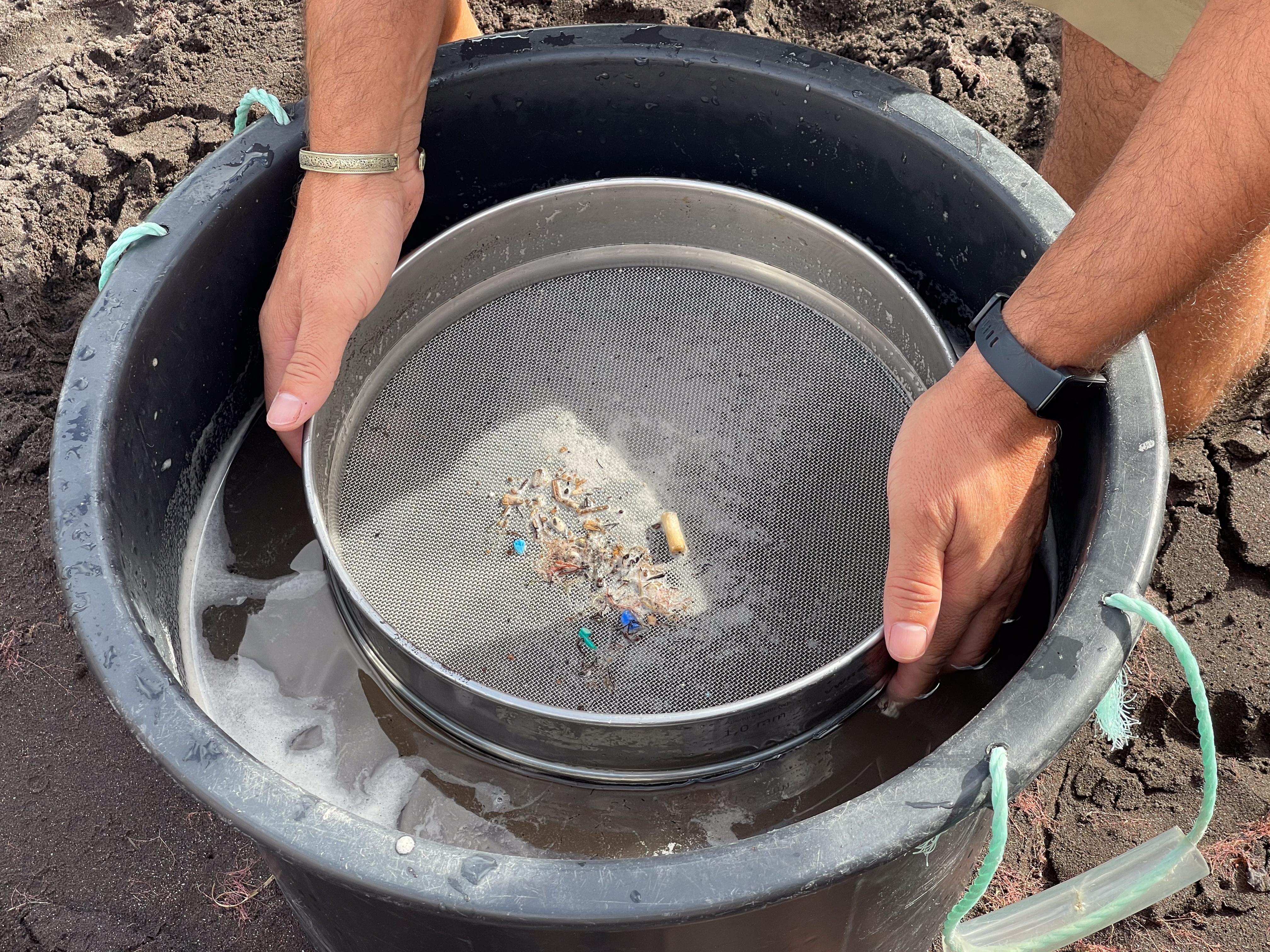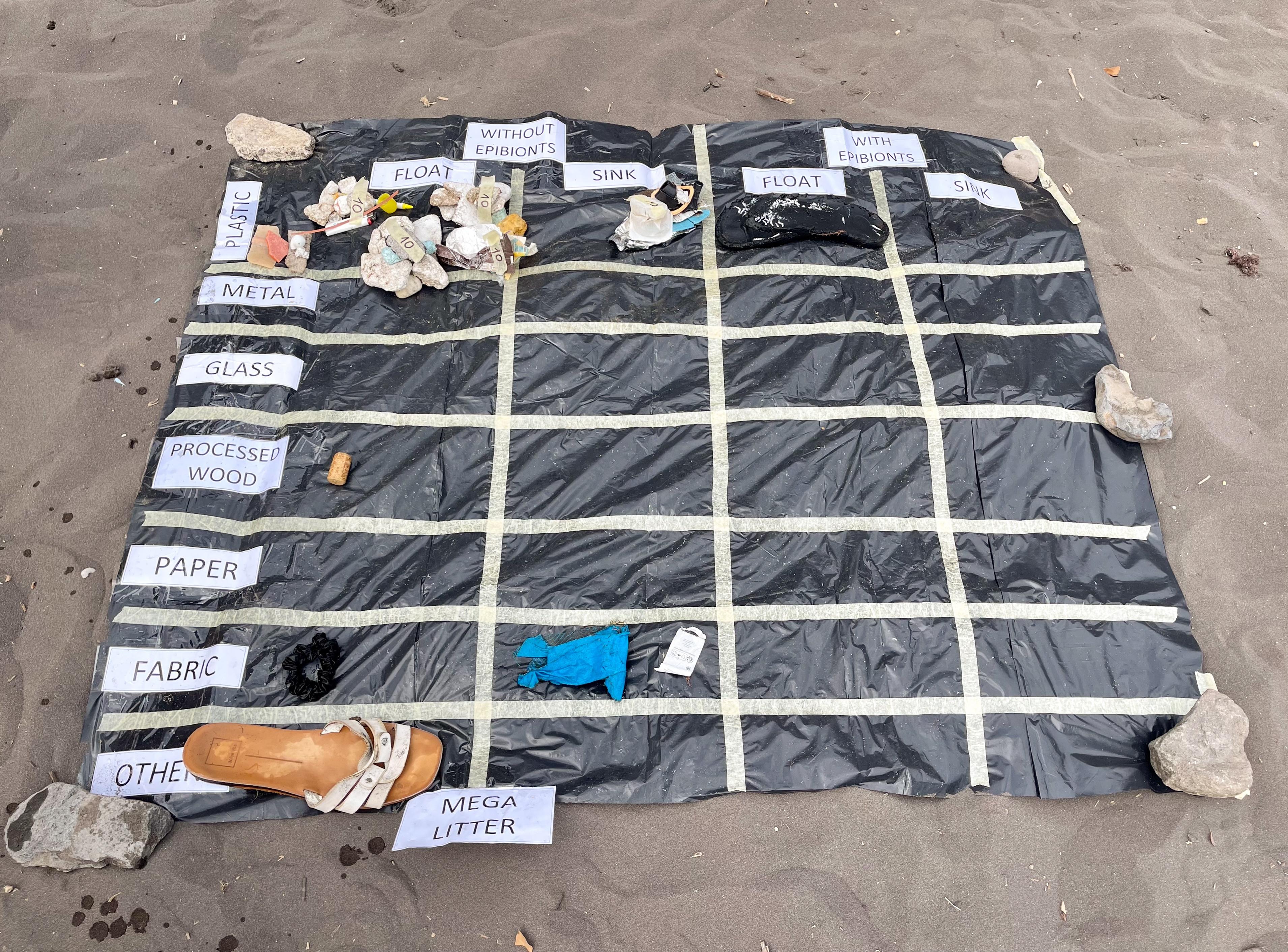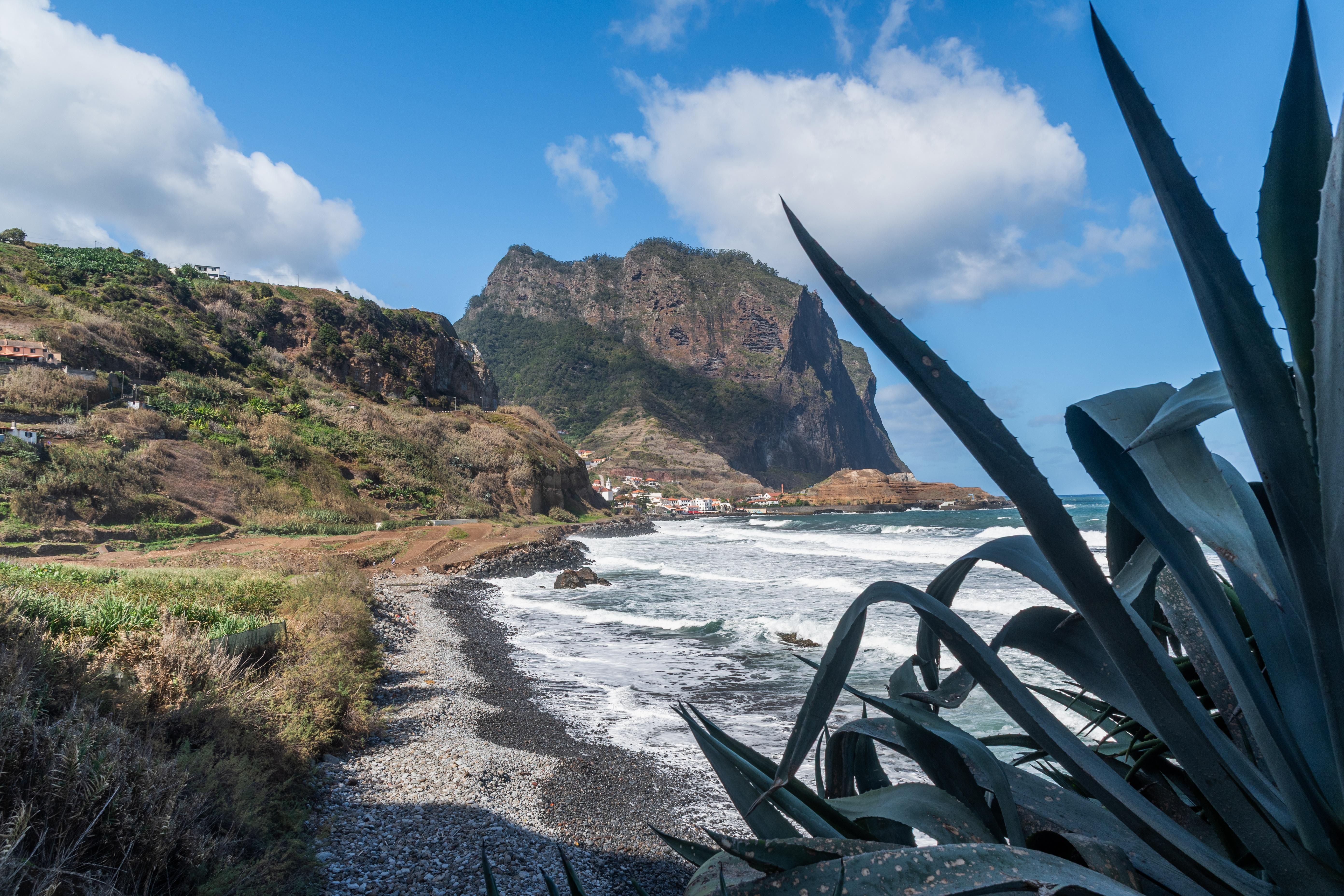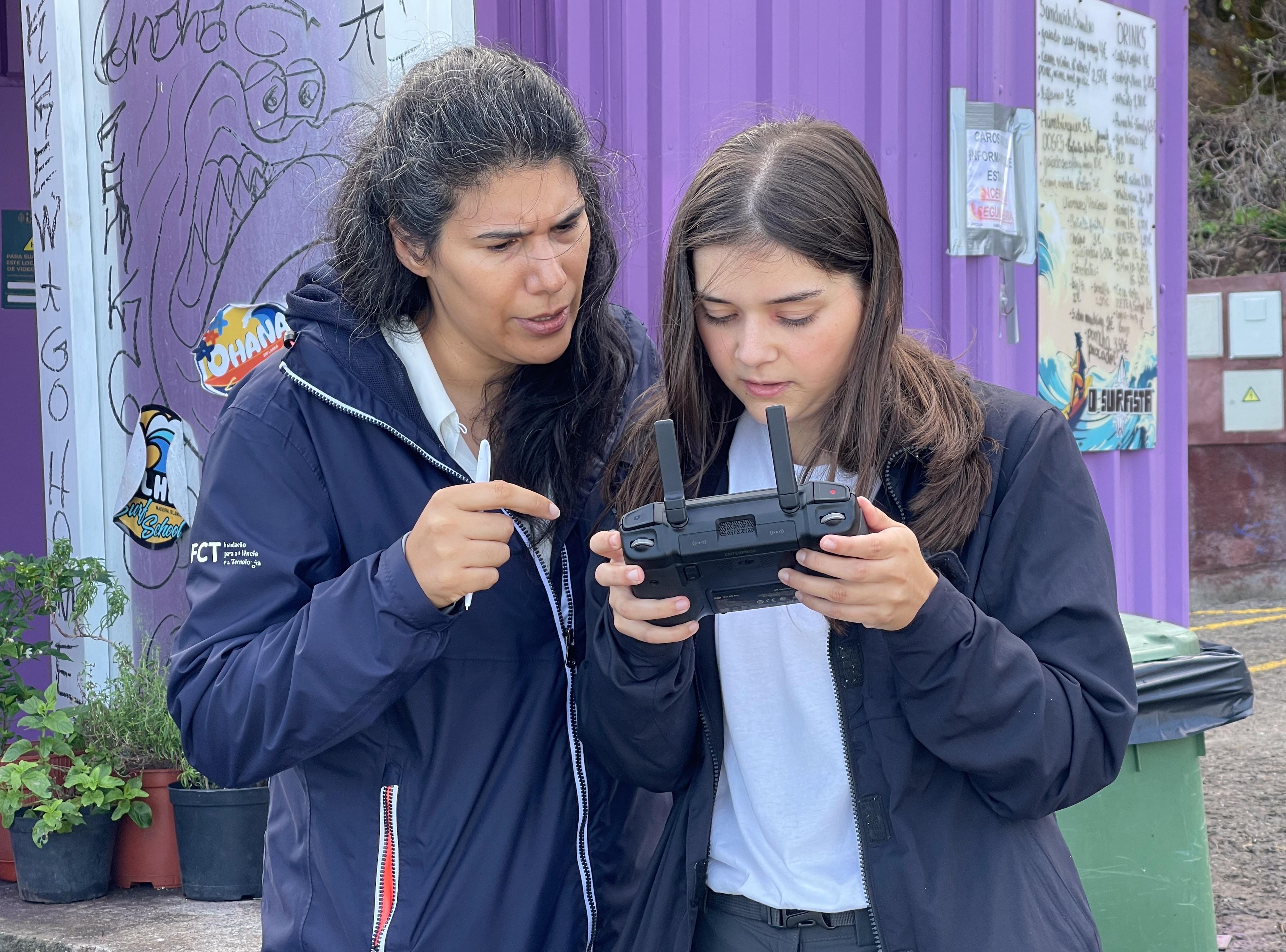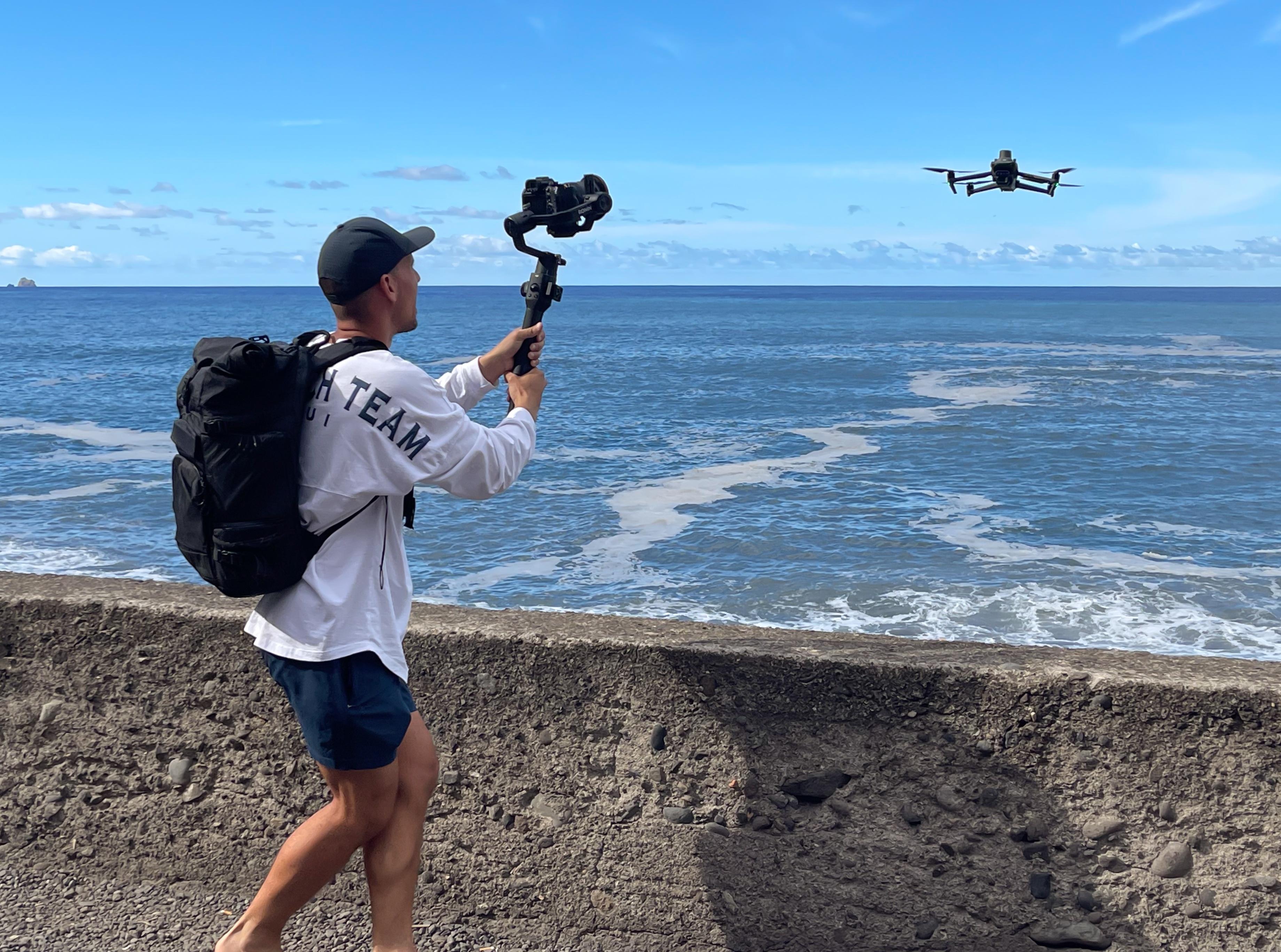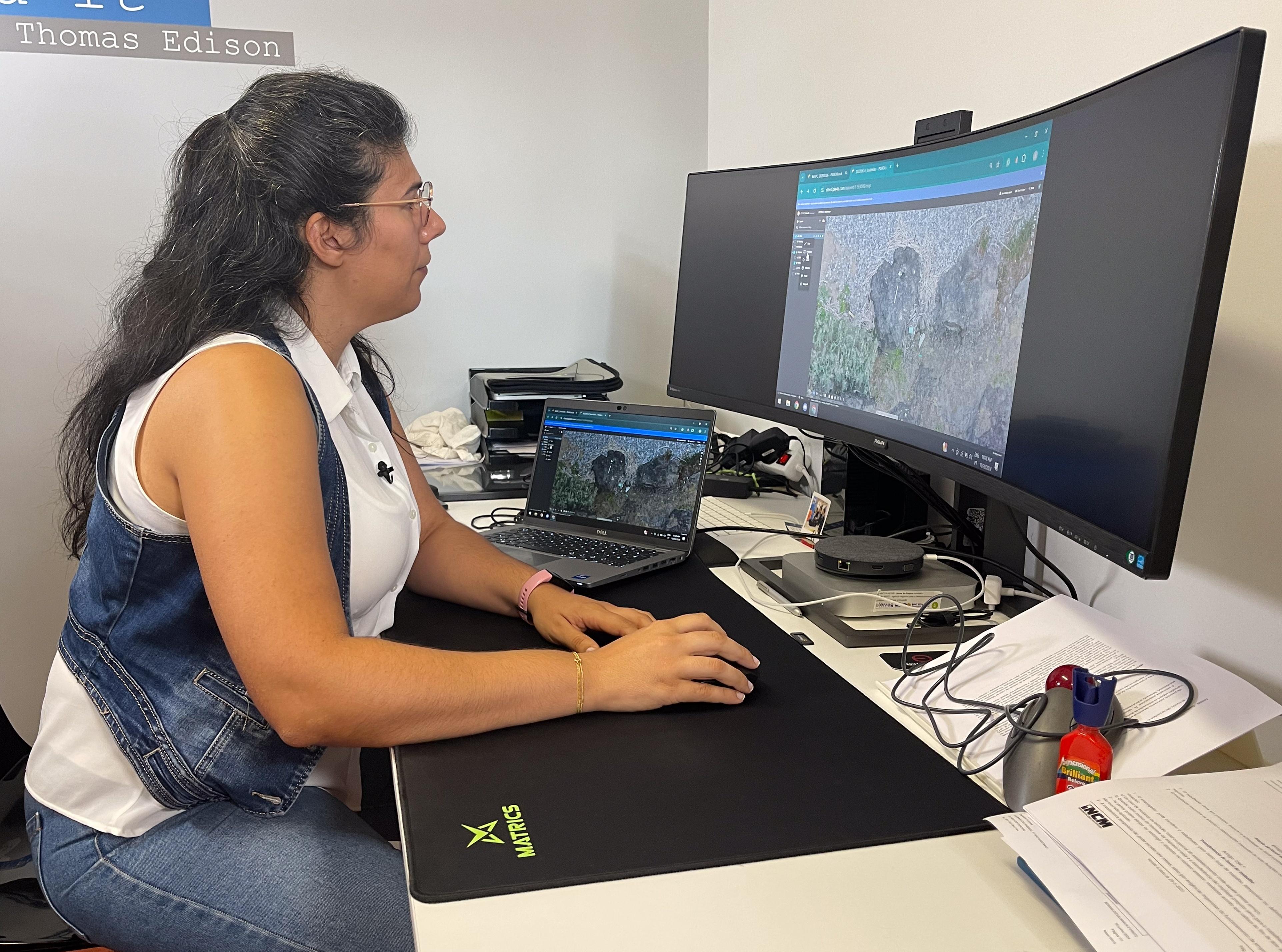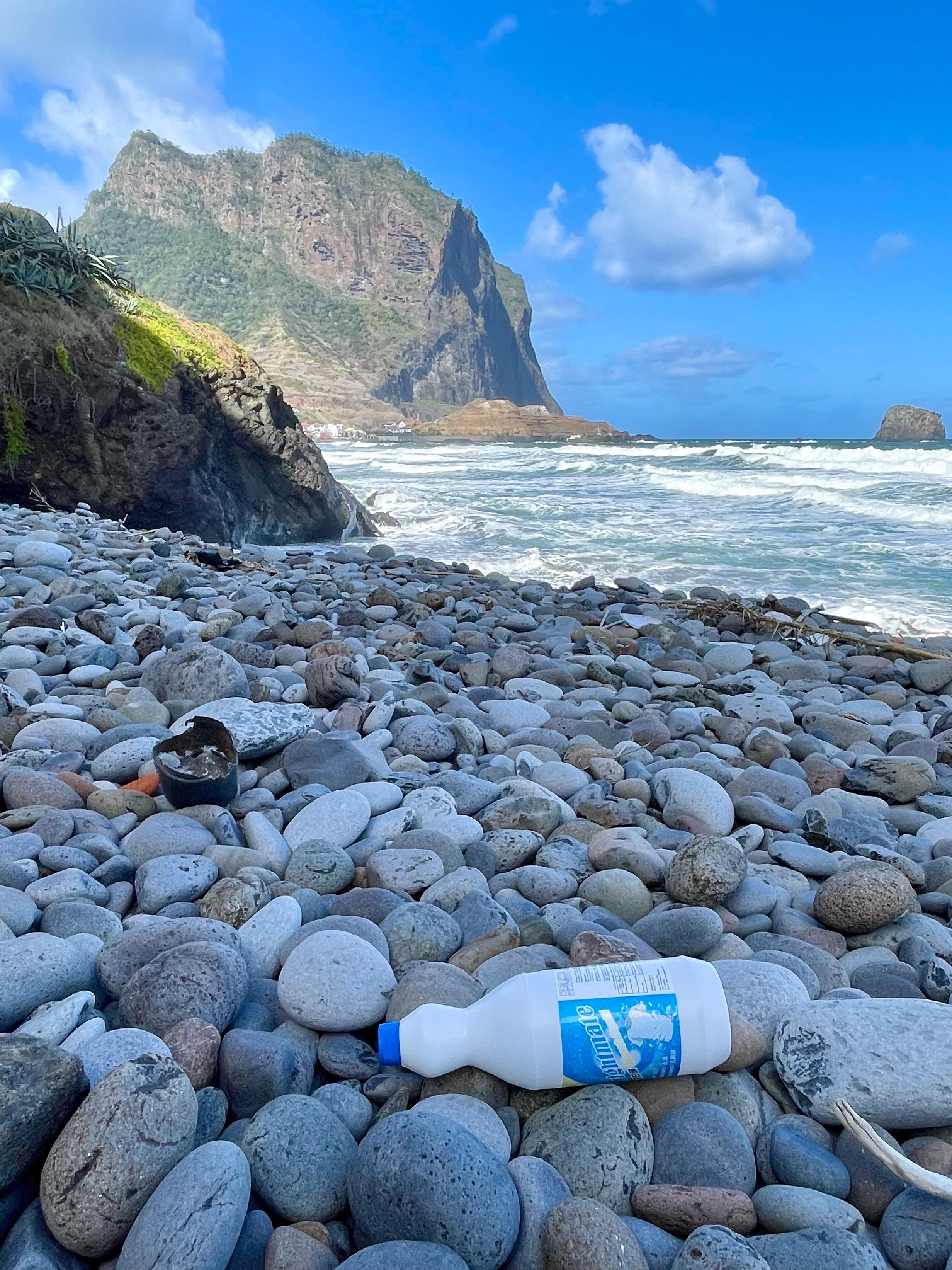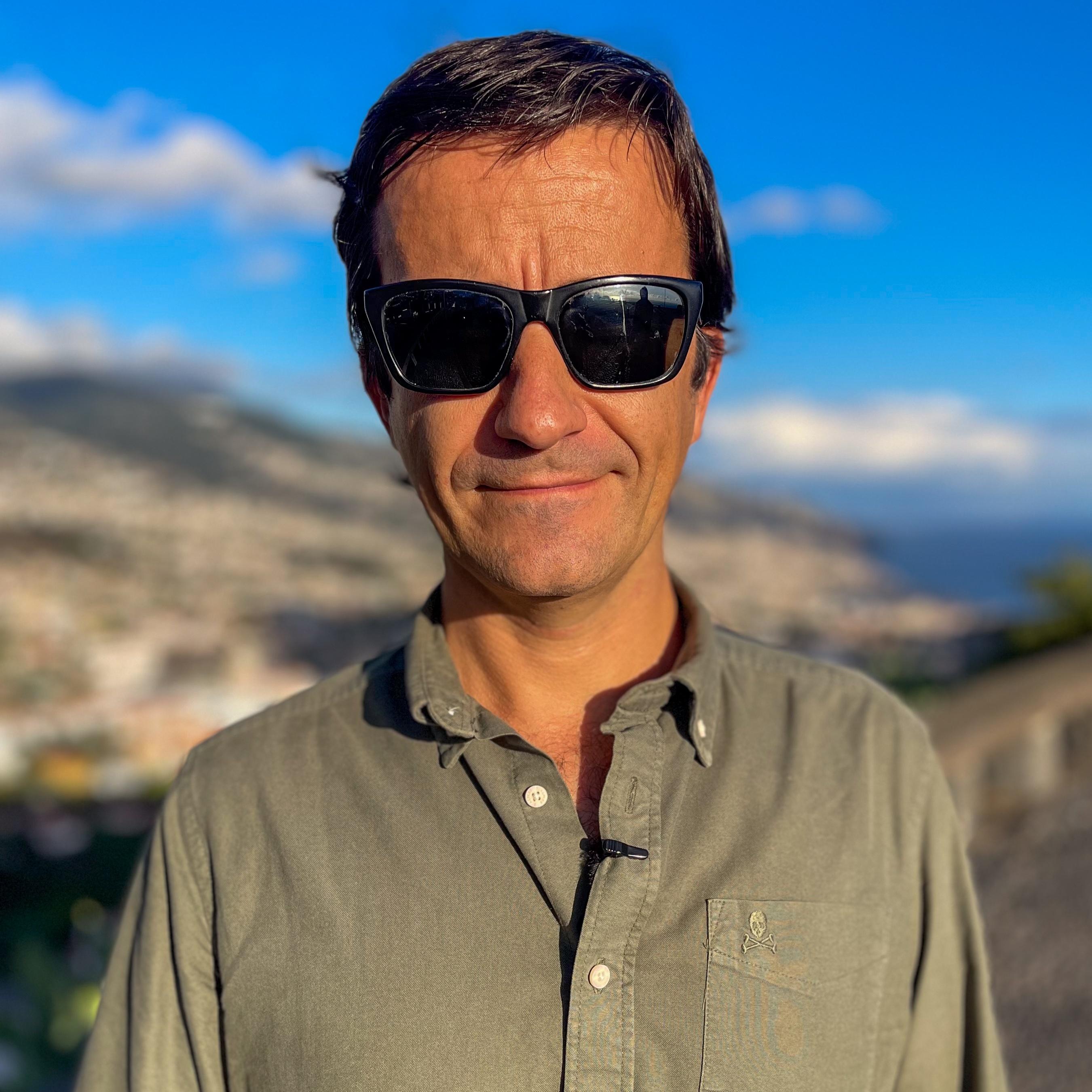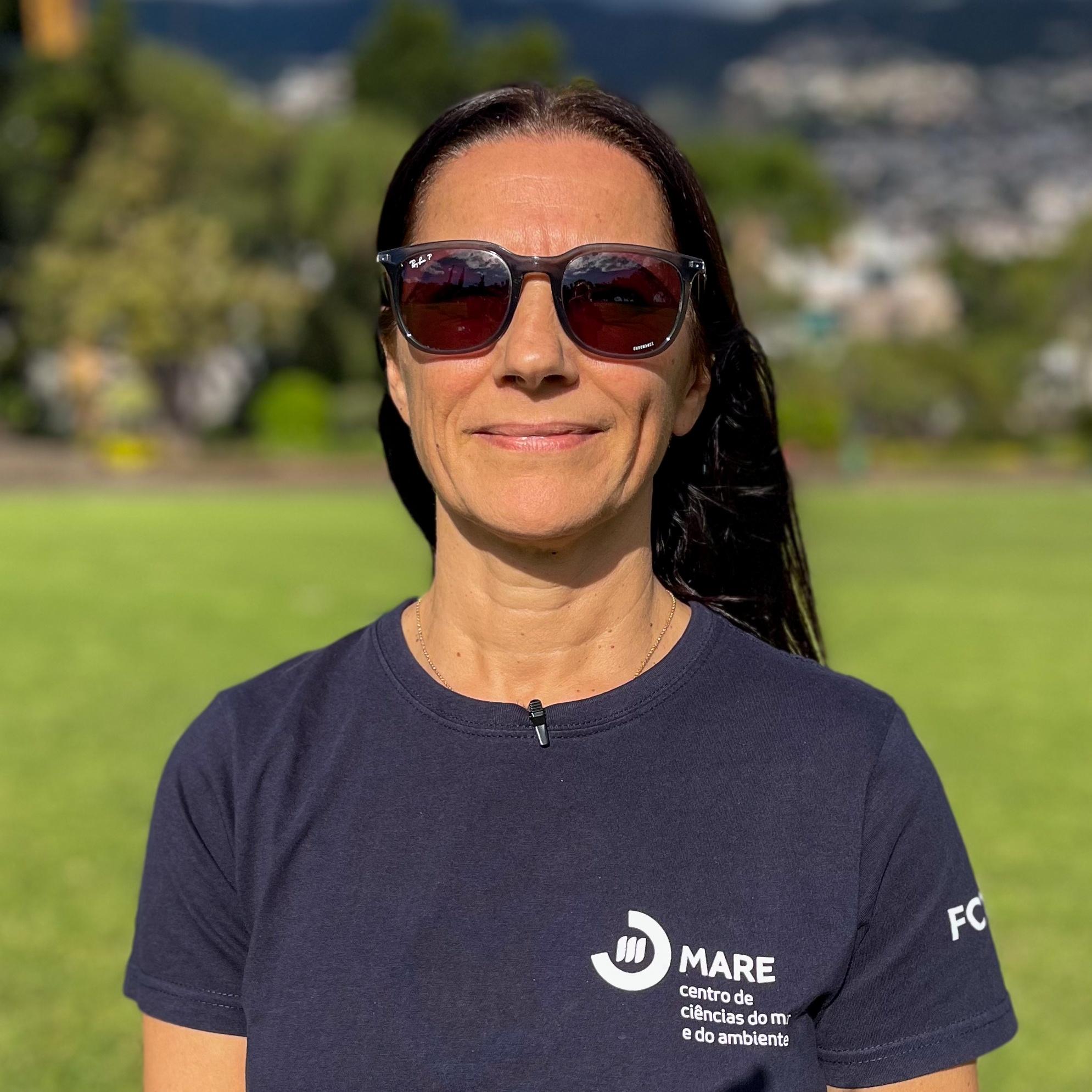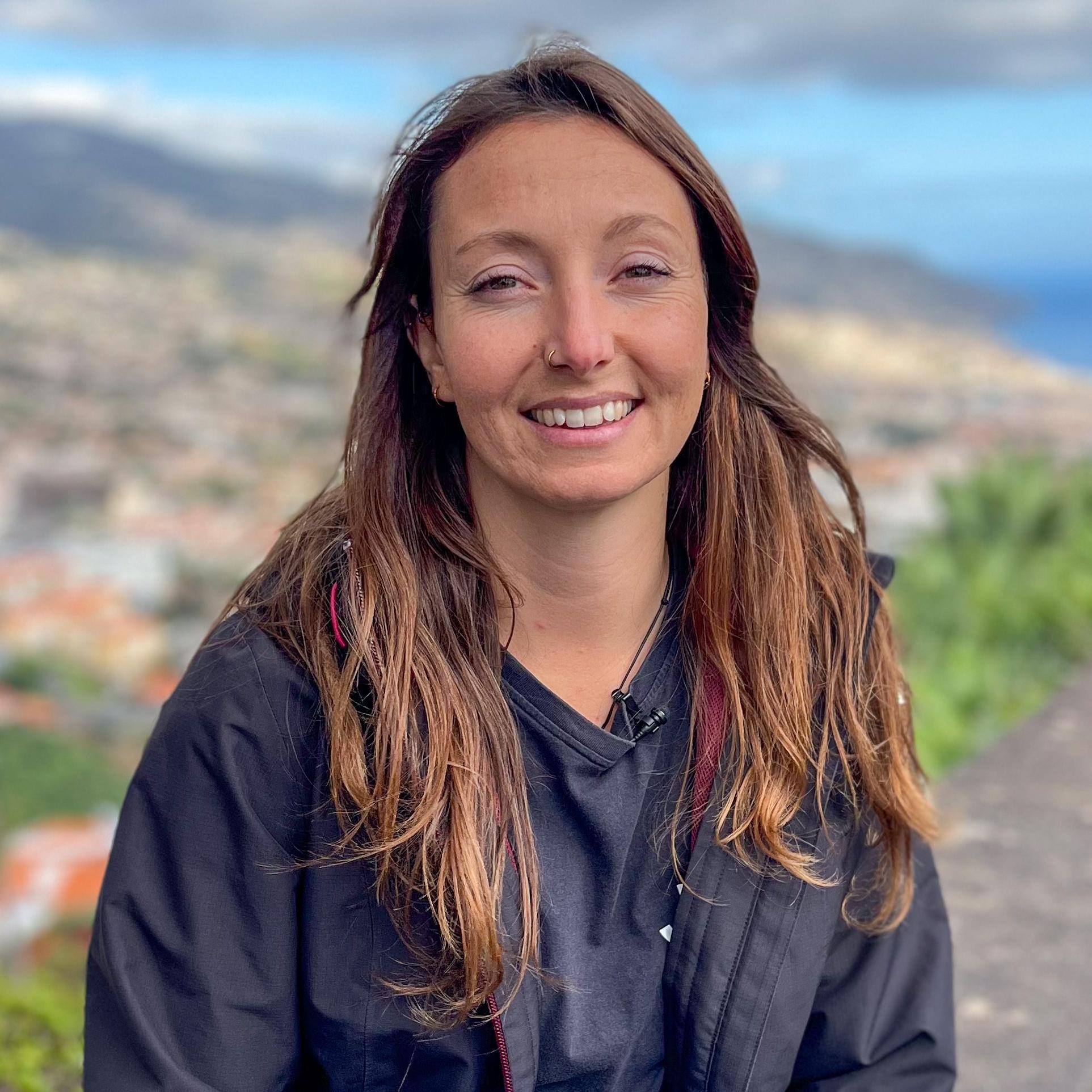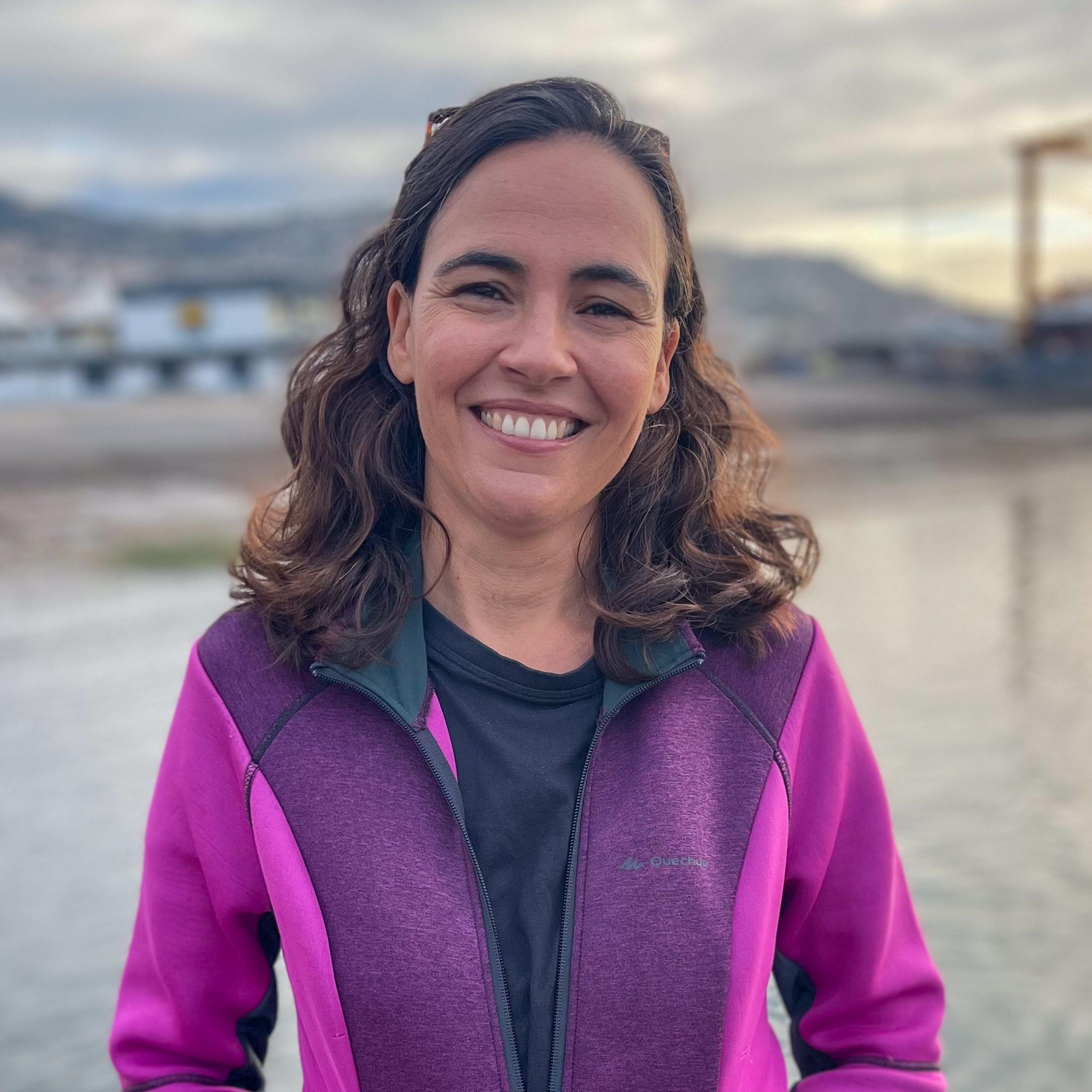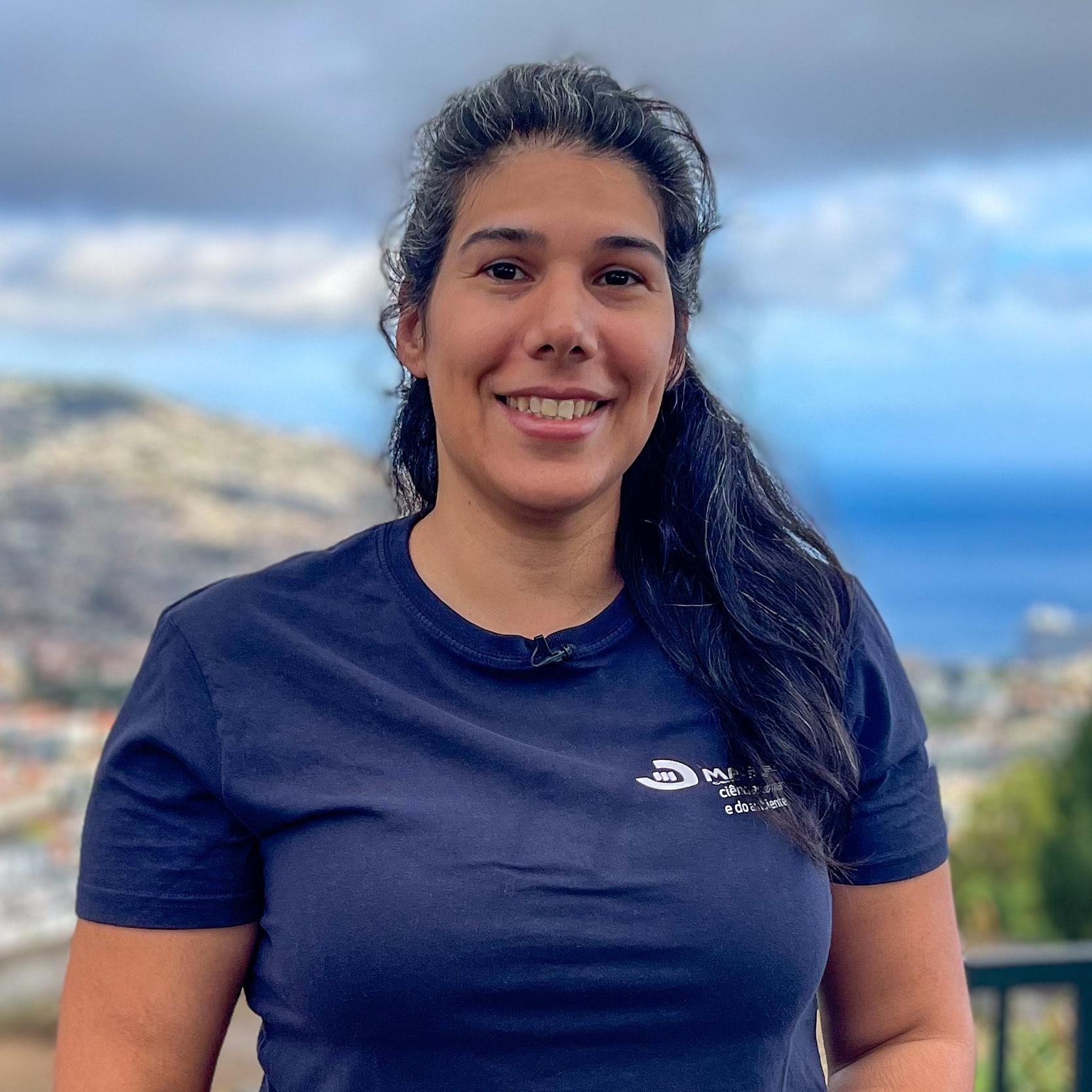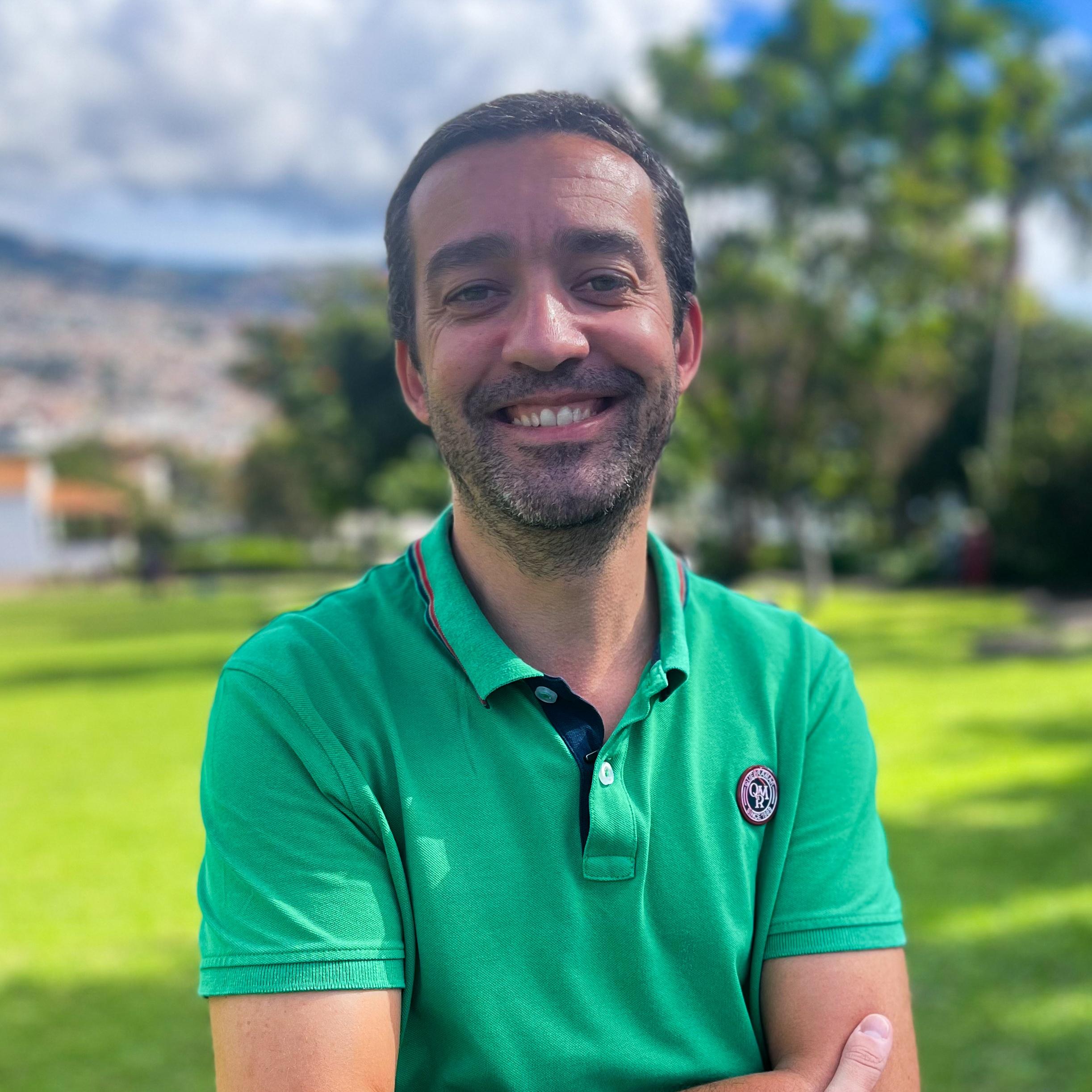Episode Photos
Far out in the eastern Atlantic, a lush subtropical oasis rises from the depths of the open ocean. This is Madeira – a volcanic island formed some 20 million years ago.
The Portuguese island of Madeira is known for its exuberant and diverse flora.
View of the capital, Funchal, and the island's southern coastline, from one of the many overlooks.
The research vessel Observatório at sunrise.
Researchers use manta trawl nets for microplastics sampling in the first 20 centimeters of the water column.
Scientists collect the contents of a manta trawl net in a jar.
Annalisa Sambolino, Ph.D. looks at the plankton and microplastics collected by the manta trawl net.
Annalisa Sambolino, Ph.D. examines microplastics under a microscope that were collected during a net trawl.
A close-up of microplastics collected from the top 20 centimeters of the water column.
Annalisa Sambolino, Ph.D. talks with a fish monger at the local market. Knowing that plastics are in the ecosystem, made scientists want to see if squid and pelagic fish, which are fish occurring in the open sea away from the shore or bottom, were feeding on these plastics.
Fish sold at the market are not only popular with Madeirans, but are also a food staple of bottlenose dolphins.
Annalisa Sambolino, Ph.D. is analyzing synthetic microfibers commonly found in the intestines of fish. The fibers mostly originate from clothing that is being washed. Wastewater treatment plants currently do not have the ability to filter out this type of pollution.
From left to right: Changing Seas Director of Photography Sean Hickey, Series Producer Alexa Elliott (back) and Videographer David Diez, with MARE-Madeira team members Patrícia Nunes (left) and Annalisa Sambolino, Ph.D., while filming in the field.
Madeira is a hotspot for whales and dolphins. Thirty species have been observed locally, and researchers study the animals along the island's southern coastline.
Among the species of whales that frequent the island's waters are deep divers such as sperm whales.
Short-finned pilot whales are another species of toothed whales that frequent the area.
Knowing plastics are present in the fish and squid that bottlenose dolphins and short-finned pilot whales feed on, had MARE-Madeira researchers conduct minimally invasive biopsies of bottlenose dolphins to collect a small sample of skin and blubber. The samples contained phthalates, a group of widely-used, harmful chemicals that make plastics more flexible and durable.
MARE-Madeira Researcher Laura Redaelli was part of a preliminary study to determine why deep-diving toothed whales, like short-finned pilot and sperm whales, wash up with a higher proportion of plastics in their guts than animals who feed in shallower water.
Madeira's rugged northern coastline, though less inhabited, has more plastic trash on its shores than other parts of the island. Items that have traveled from far away places like North America and the Caribbean are brought there by the northern gyre current.
Knowing how big of a problem plastic pollution is in the oceans, MARE-Madeira researchers assess where and what kinds of trash washes up on the island’s shores.
To collect micro-sized items, the team sets up five 50 square centimeter quadrats, 25 meters apart, at the high tide line, and sifts the top layer of sand. The collected items are then taken back to the lab for analysis.
Larger trash is collected by walking the beach and then sorted into different categories.
Large trash items are sorted into different categories, including those that float and those that sink. Organisms often attach themselves to floating plastics, which can travel long distances in ocean currents. These organisms can be invasive, creating problems far away from their home range.
Most of Madeira's beaches are rocky, making it more difficult to study the trash that washes up on foot.
The research team uses drones to study the accumulation of larger plastic trash on rocky and remote beaches.
Videographer David Diez captures the shot during a battle of the cameras.
Researcher Sílvia Almeida takes overlapping drone images and stitches them together into one large photomosaic. This sizable image serves as a contamination map of an area on which trained experts can mark all the trash they can identify.
While Madeira is seeing fewer impacts from plastic pollution than mainland Portugal, it is still exceeding international pollution thresholds by 90 percent.
